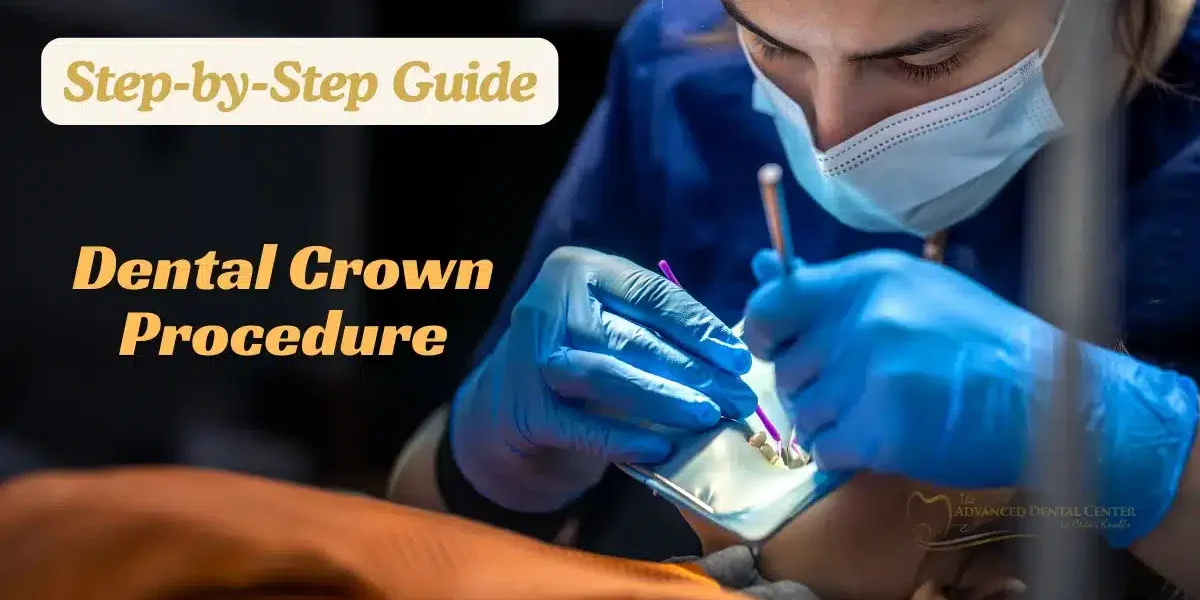Dental Crown Procedure: Step-by-Step Guide
If your dentist has recommended a dental crown procedure, you might be wondering what exactly happens during the treatment. At The Advanced Dental Center of Cedar Knolls, our team of experienced dentists provides gentle, precise crown procedures for patients across Cedar Knolls, Hanover, Morristown, and surrounding Morris County communities.
A dental crown procedure involves restoring a damaged or weakened tooth with a protective, custom-made “cap.” It’s a common restorative dental procedure that strengthens the tooth, improves its appearance, and prevents further damage. Whether caused by decay, cracks, or after a root canal, this procedure helps patients regain confidence in their smile while protecting their oral health.
Understanding the Dental Crown Procedure
A dental crown procedure is the process of preparing, designing, and placing a crown over an existing tooth to restore its structure and function. According to the American Dental Association (ADA), crowns are recommended when a tooth is too damaged for a simple filling but still healthy enough to preserve the natural root.
The procedure serves three main purposes:
- Restoration: Repairs and rebuilds the tooth’s shape and strength.
- Protection: Shields weak or cracked teeth from further damage.
- Aesthetic enhancement: Improves the look of discolored or misshapen teeth.
Common crown materials include porcelain, metal alloys, zirconia, and porcelain-fused-to-metal. Each type varies in appearance, durability, and cost. For example, porcelain and zirconia crowns are ideal for front teeth due to their natural look, while metal crowns may suit molars for greater strength.
Dentists may recommend the procedure if you:
- Have a cracked or worn tooth
- Need protection after a large filling or root canal
- Want to cover a dental implant or restore your bite alignment
The Dental Crown Procedure | Step by Step
At The Advanced Dental Center of Cedar Knolls, our crown process is detailed yet comfortable. Here’s what you can expect during each stage.
Step 1: Dental Examination & Preparation
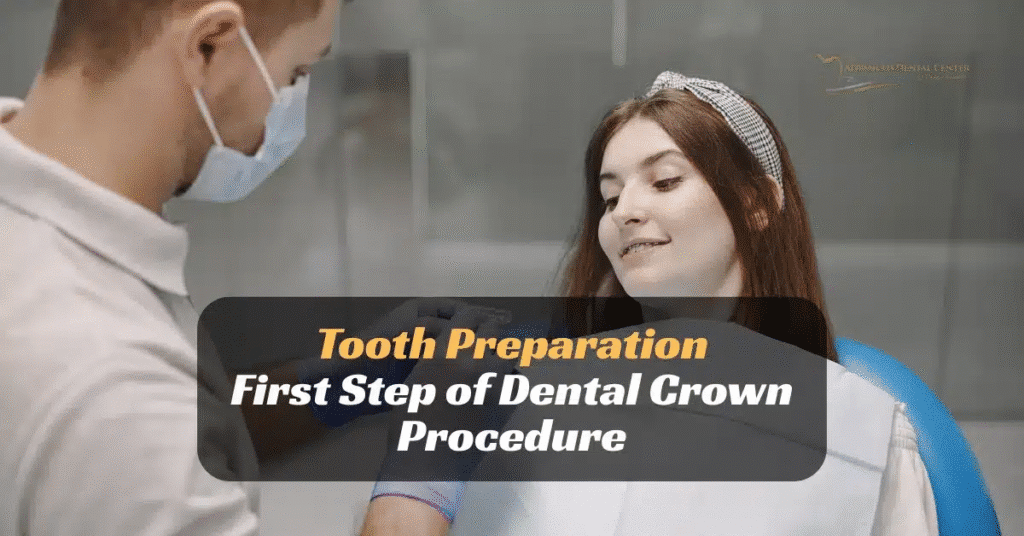
Your dentist begins by examining the tooth and surrounding gum tissue. X-rays may be taken to assess root health and bone structure. If any decay is present, it’s cleaned thoroughly before proceeding.
After applying local anesthesia, the dentist reshapes the tooth by gently removing a thin outer layer to make room for the crown. This ensures the final crown fits perfectly and aligns with your bite.
According to Mayo Clinic, reshaping the tooth helps achieve an exact crown fit and prevents gaps that could lead to decay or discomfort.
Step 2: Tooth Impression or Digital Scan
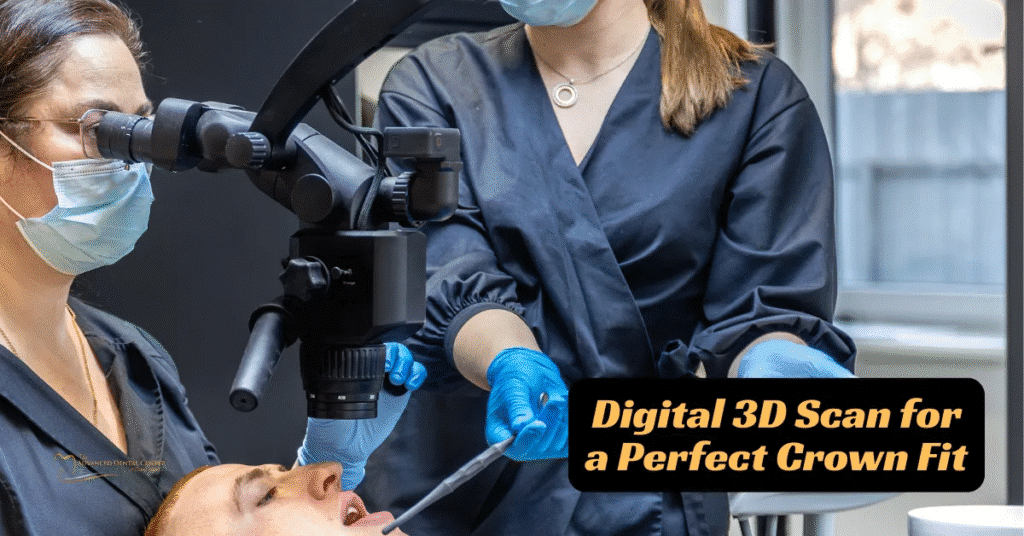
Once the tooth is prepared, an impression or digital 3D scan is taken.
Traditional methods use dental putty, while modern practices like ours often use CAD/CAM digital scanning for greater accuracy and comfort.
This digital impression is sent to a dental lab (for traditional crowns) or processed instantly for same-day crowns. If a lab crown is made, you’ll receive a temporary crown to protect your tooth until the final version arrives, typically within 1-2 weeks.
Step 3: Temporary Crown Placement
A temporary crown is a short-term protective cover, usually made from acrylic. It shields the tooth from sensitivity and maintains your bite until your permanent crown is ready.
While wearing a temporary crown:
- Avoid sticky or hard foods (like gum or nuts).
- Brush gently and floss carefully.
- Call your dentist if it becomes loose or uncomfortable.
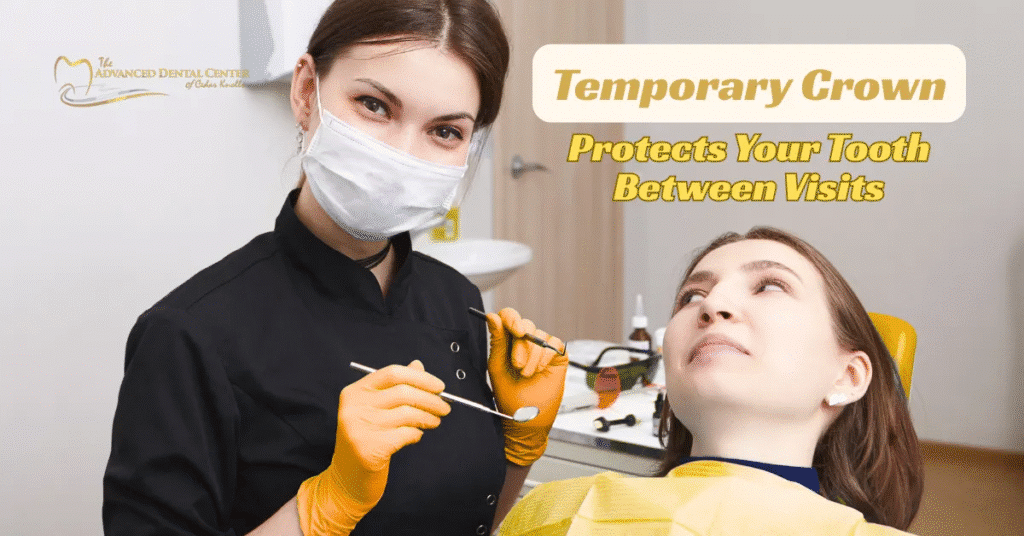
Temporary crowns play a vital role in keeping your prepared tooth safe and functional between visits.
Step 4: Final Crown Fitting & Cementation
Once your permanent crown is ready, your dentist will remove the temporary one and check the fit, color, and shape of the new crown. Minor adjustments ensure that it aligns with your natural bite and feels comfortable.
After confirming a perfect fit, the dentist uses dental cement to permanently bond the crown to your tooth. The final step includes a bite test and polishing to ensure smoothness and comfort.
At our Cedar Knolls dental office, we prioritize comfort at every stage, ensuring the process is pain-free and precise.
How Long Does a Dental Crown Procedure Take?
The duration depends on whether you receive a traditional lab-made crown or a same-day (CEREC) crown.
| Type | Visits Needed | Total Time | Advantages |
| Traditional Lab-Made Crown | 2 visits | 1-2 weeks | Highly precise, natural shade options |
| Same-Day (CEREC) Crown | 1 visit | 1-2 hours | Fast, no temporary crown, digital accuracy |
According to Cleveland Clinic, most crown procedures take 60-90 minutes per appointment, depending on complexity and technology used.
At The Advanced Dental Center of Cedar Knolls, we offer both traditional and same-day solutions depending on your dental needs and schedule.
Does the Dental Crown Procedure Hurt?
This is one of the most common concerns among patients. The good news: the dental crown procedure is typically painless.
Dentists use local anesthesia to numb the tooth and surrounding tissue before preparation. You may feel mild pressure during shaping or cementing, but no pain.
After the anesthesia wears off, it’s normal to experience slight sensitivity or gum tenderness for a few days. Over-the-counter pain relief and good oral hygiene help ease discomfort quickly.
WebMD notes that most patients report little to no pain after a crown procedure, especially when anesthesia and proper aftercare are provided.
Recovery and Aftercare for a New Dental Crown
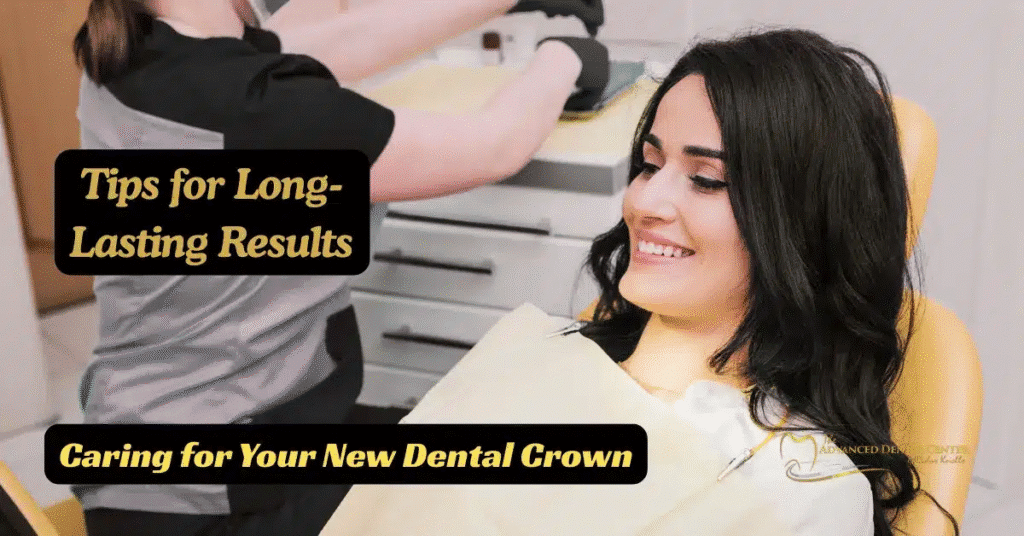
Caring for your crown helps ensure longevity and comfort. Here are key aftercare tips:
For Temporary Crowns:
- Avoid chewy, sticky, or crunchy foods.
- Brush gently around the area.
- If it becomes loose, call your dentist immediately.
For Permanent Crowns:
- Brush twice daily with fluoride toothpaste.
- Floss gently along the gum line.
- Avoid biting ice or hard objects.
- Visit your dentist for regular cleanings and exams.
According to the ADA, most dental crowns last 10-15 years with proper care. However, good oral hygiene and regular checkups can extend their lifespan beyond 20 years.
If you notice sensitivity, a rough edge, or bite changes, book a follow-up at The Advanced Dental Center of Cedar Knolls for an adjustment.
Cost and Insurance Overview
The cost of a dental crown procedure varies depending on the material used, tooth location, and whether same-day technology is utilized. Most insurance plans cover part of the cost when crowns are medically necessary.
For an accurate estimate, schedule a consultation at our Cedar Knolls office. Our team provides transparent pricing and helps you maximize insurance benefits.
For more details about our restorative services, visit our restorative dentistry services page.
Frequently Asked Questions (FAQ)
How is a dental crown procedure done?
The dentist reshapes your tooth, takes an impression or digital scan, and places a custom-made crown using dental cement. (Mayo Clinic)
How long does a dental crown procedure take?
Traditional crowns require two visits (about two weeks apart). Same-day crowns can be completed in one visit.
Do I need a temporary crown?
Yes, if your permanent crown is being made in a lab. Temporary crowns protect your tooth during the wait.
Is a crown procedure painful?
No. With local anesthesia, you’ll feel only mild pressure. Minor post-procedure soreness is normal and temporary.
How long does a crown last?
Most crowns last 10-15 years, sometimes longer, with proper oral care and regular dental visits.
Schedule Your Dental Crown Procedure in Cedar Knolls
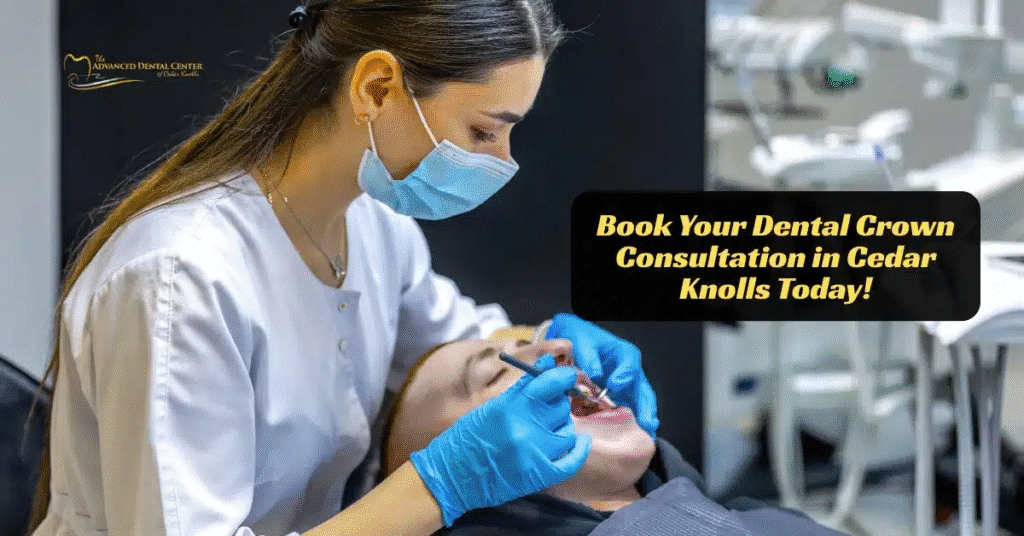
A dental crown procedure can restore your smile’s strength, function, and appearance, all in a few comfortable visits. Whether you’re in Cedar Knolls, Hanover, Morristown, or surrounding Morris County communities, our friendly dental team ensures a seamless, patient-focused experience from start to finish.
Ready to restore your tooth with confidence?
Book your consultation today at The Advanced Dental Center of Cedar Knolls and let our experts craft a crown that looks and feels natural.

